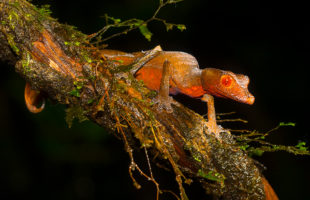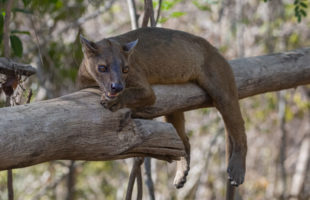A small but very pretty gecko lives well camouflaged in the rainforests of the central east and southeast in the highlands of Madagascar: the Satanic Leaf-Tailed Gecko (Uroplatus phantasticus). The little guy got his name from biologist George Boulenger as early as 1888. The Belgian first described the species and chose the name because of the bizarre appearance of the …
LesenSchlagwort-Archiv: rare
Marojejy National Park
Marojejy: Marojejy National Park is one of the most biodiverse and beautiful in Madagascar, but also one of the most difficult to travel to. An “advanced paradise”! The Malagasy words maro and jejy have various meanings, including “many stones” and “much rain”, but also “many animals” and “many ancestral spirits”. Location: Marojejy National Park is located in the northeast of …
LesenReptiles in general
Madagascar is the reptile paradise per se and especially known for its chameleons. 92 of all 213 up to date described chameleon species only occur in Madagascar. They seem to be fabulous creatures with their strange tongue, the independently from eacht other movable eyes and feet and hands transformed into grapsing forceps. Unfortunately, those beautiful animals aren’t very popular with …
LesenAn extraordinary predator: The Fossa
Indeed it looks a little strange: The Fossa (Cryptoprocta ferox). The long-stretched body wears a thick tail of almost equal length, and the cat-like head is graced by quite sharp teeth and a big, round nose. And although the Fossa grows only knee-high, it is Madagascar’s largest predator. Both genders reach a maximum body weight of 12 kg, the males …
LesenOther mammals in general
Originally, Madagascar has no big mammals like buffaloes, zebras, hippos, lions or other large animals you can meet all around Africa. Ruminants, which settle nearly all regions worldwide, lack in Madagascar completely. The now everywhere kept Zebus were introduced to the island as domestic cattle and don’t occur in the wild. The Indian Civet is another animal introduced by humans, …
Lesen MADAMAGAZINE Your Magazine about Madagascar
MADAMAGAZINE Your Magazine about Madagascar





